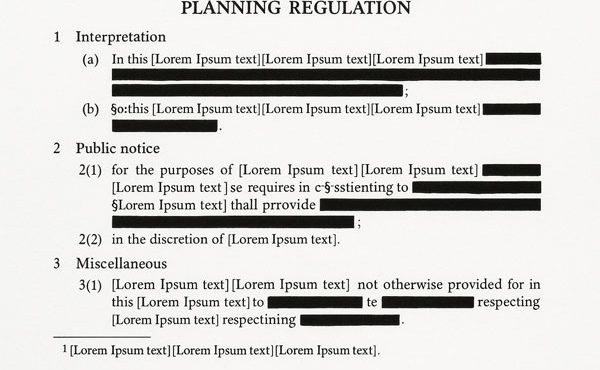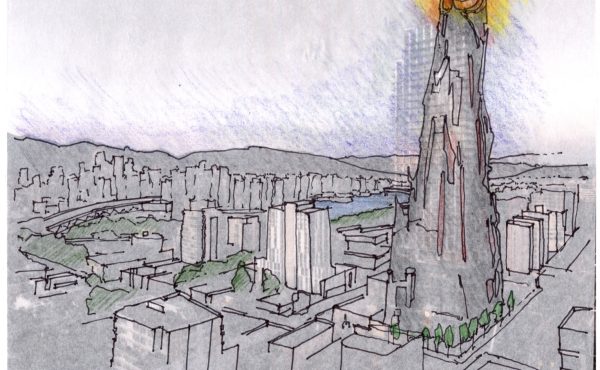Price Points began last July with this image:
.
.

It’s Emery Barnes Park, in the heart of Downtown South (map here). And it’s time to return.
This weekend the park had an official opening. It wasn’t the first, since the park has developed in stages since the turn of the century, at the time Downtown South – roughly the district east of Burrard between Robson and Pacific – was being considered for the transformation immediately evident today: now a 21st century West End.
The City had a long-established policy that wherever new residential development was being considered, it would be accompanied by new green space. The challenge in Downtown South was the absence of open land: to build a park required acquisition and demolition. Land had to be purchased, at market rates, in one contiguous piece. The cost would be in the millions: the park construction itself: $3 million; the acquisition of the land: probably ten times that.
It was here that the concept of Development Cost Charges was first used and embedded in the rezoning. For every square foot of development that occurred, there would be an imposition of about $6, consolidated by the city and to be used only for parks, child care and replacement low-income housing.
Some say cost charges are one of the reasons housing is so expensive in Vancouver, though that’s disputed. There’s no doubt the resulting use of those dollars adds value to the neighbourhood – a win-win. People get a park, and developers get an amenty which adds value to the product they’re selling: the surrounding condominiums.
Emery Barnes Park, already one of the most vital and vibrant new spaces of Vancouver, bears the name of the first Black MLA and Speaker of the B.C. Legislature – a man who was celebrated this weekend along with the completion of the park. More on that over at Price Tags here.
For Spacing, here’s documentation of the change to this block in the heart of Vancouver’s newest neighbourhood …
Looking southwest from Richards Street about 2000:
.
Construction underway for the first phase in 2002:
.
First phase finished by 2007:
.
From ground-breaking in 2002 to completion in 2012 – a decade. Not too bad in the life of the city, given that expropriation powers, though available, were never used. There were a few sites that took some time to acquire, notably the parcel at the corner of Seymour and Davie (right).  But even before the neighbourhood had been officially rezoned, the City had been strategically purchasing properties that prevented a single owner from consolidating too much of the site.
But even before the neighbourhood had been officially rezoned, the City had been strategically purchasing properties that prevented a single owner from consolidating too much of the site.
The story line these days is that it took community pressure to get anything to happen. Not quite. This was a combination of long-term planning (the designation of this part of downtown for massive growth) and an elegant bureaucratic mechanism (those Development Cost Charges) that made Emery Barnes Park possible. It didn’t take any pressure from the community since it was anticipated before anyone arrived. It’s a legacy, though few acknowledge it at this point, of Gordon Campbell, who as mayor understood how to lever the money made in real-estate development for public goods. Which is what we call a park.
.
UPDATE: I asked Randy Pecarski, a senior planner at City Hall, to check my facts on the above story, particularly with respect to development cost charges. He responded with a very helpful distinction:
I think the main thrust of your facts stand. You are right that Downtown South was the first place where we applied the then ‘new’ Development Cost Levy (DCL) authority to a redevelopment area; based on an assessment of public benefit demands. Two comments on the ‘details’:
DCCs, which most development folks recognize, are similar but not the same as Vancouver’s DCLs — the key difference is what we can fund from these development charges. DCCs which apply to almost all municipalities in BC can only be spent on engineering works (roads, water, sewer) and parks. Our DCLs recognize that in addition to these ‘hard’ infrastructure costs, a redeveloping, urban area would have additional ‘soft’ infrastructure demands so the province added ‘replacement’ (affordable – not ‘low income’) housing, and childcare facilities. Your blog text acknowledges what we provide – but most readers from the development industry would wonder why DCCs are going to housing and/or childcare
ii) The key to using DCLs to get development-related benefits was to rezone the entire planning area so that these development charges could be applied to every new development, payable at building permit issuance. Until Vancouver got the DCL authority, the only means to secure development benefits was through the site-specific rezoning process. This was a huge ‘efficiency’ benefit, as sites did not have to rezone one by one. The outcome should have been to reduce the costs of development (i.e. no rezoning fees and time delay).








